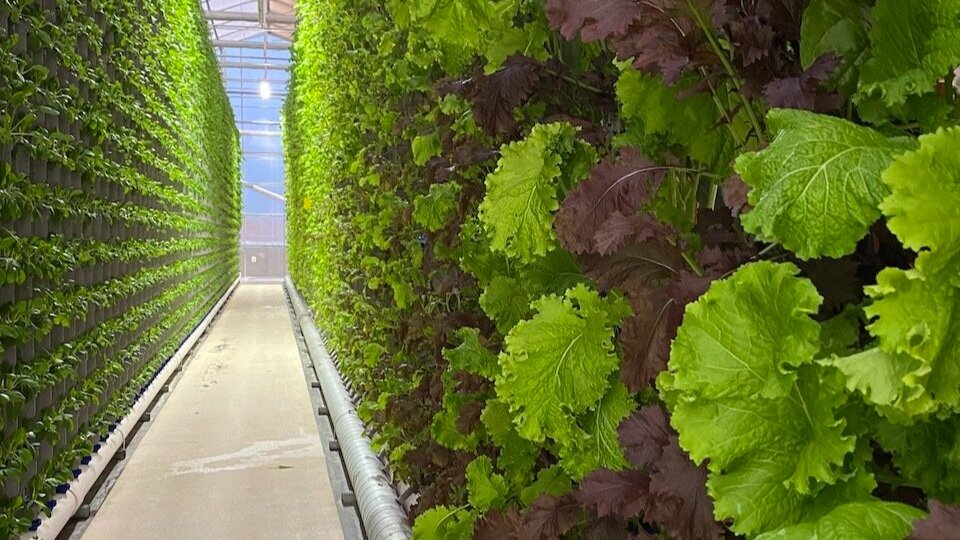What Is Commercial Agriculture?
Commercial agriculture, also known as commercial farming or agribusiness, revolves around the cultivation of crops and rearing of livestock primarily for profit rather than personal consumption. At its core, commercial agriculture targets broader markets with a focus on business and profit-making through the production and sale of agricultural commodities. This approach represents a significant shift from traditional subsistence farming practices, where farmers primarily produced food to meet their own needs.
Commercial agriculture means growing food on a large scale to sell for profit to stores, restaurants, and people across the country.
To understand this better, think about the difference between two types of farming: subsistence farming and commercial farming. In subsistence farming, people grow just enough to feed themselves and their families. They don’t sell much and often use simple tools and methods. In commercial farming, everything is grown to sell. These bigger farms use machines, science, and technology to grow more food faster.
Modern commercial farms use smart tools to improve their work. They might have machines that plant and water crops automatically. Some farms use sensors and computers to monitor plant health. Others grow hydroponic produce, which means the plants grow in water, not soil.
Technology and innovation help farmers grow more food with less waste, which is better for people and the planet.
Core Concepts of Commercial Agriculture
The main objective of commercial agriculture is to generate profit by maximizing yields and efficiently utilizing resources. This is achieved through large-scale production, specialization, and the implementation of advanced technological systems.
Commercial farmers, or agribusinesses, operate on a vast scale, investing substantial capital in high-quality machinery, equipment, and other inputs to make large-scale production feasible and economically viable. The ultimate goal is to generate profits either through direct sales to consumers or by providing raw materials to various industries.
Unlike subsistence farming, which is characterized by small-scale operations and limited technology use, commercial agriculture embraces technological innovation and market integration as fundamental pillars of its operational model. This agricultural approach serves as the backbone of global food systems, providing not only essential food products but also raw materials for various industries worldwide.
Differentiation from Subsistence Farming
Commercial agriculture stands in stark contrast to subsistence farming in several key aspects. While subsistence farming focuses on producing just enough to feed the farmer's family with little to no surplus, commercial agriculture aims to produce large quantities specifically for market sale.
Subsistence farming typically involves small-scale operations with minimal technology, whereas commercial agriculture employs advanced technologies and operates on significantly larger scales. Additionally, commercial farming requires professional management skills and business acumen, while subsistence farming generally involves traditional practices passed down through generations.
The Role of a Commercial Farmer
A commercial farmer runs a farm that grows crops or raises animals to sell. These farmers often manage big operations with many workers, machines, and even computer systems to help with daily tasks.
Instead of guessing, commercial farmers use data to make smart decisions. They track things like soil health, weather, and plant growth to know exactly when to water, feed, or harvest their crops. Some use greenhouses or other innovative hydroponic systems to grow food indoors, where everything can be controlled.
Many are also choosing more sustainable ways to farm. Hydroponics and vertical farming use less space and water but still grow a lot of food. This kind of commercial cultivation helps farmers produce more while protecting the environment.
The Six Main Types of Commercial Agriculture
There are many ways a commercial farm can grow food or raise animals. These farms are often designed around the type of crop or livestock they specialize in. Here are the six main types:
1. Dairy Farming
Dairy farming focuses on producing products like milk, cheese, yogurt, and butter. These farms raise cows or other milk-producing animals, and they often use machines to help with milking and feeding.
These farms collect, cool, and ship milk to factories where it’s turned into products for stores and restaurants. Large dairy farms may milk hundreds or even thousands of cows each day. This type of farming plays a big role in providing everyday items that many people use.
2. Grain Farming
Grain farms grow crops like wheat, corn, oats, and rice. These are staple foods that form the base of many diets around the world. Grains are used in everything from bread and cereal to animal feed and biofuels.
Most grain farming happens on large plots of land using tractors and combines to plant and harvest quickly. Grain farming is common in areas with wide, flat land, like the Midwest in the United States. Because of the size and scale, these farms are often highly automated.
3. Livestock Ranching
Livestock ranching is all about raising animals such as cattle, pigs, and chickens for meat, eggs, and other animal products. These farms need open land for grazing or barns for shelter, depending on the type of animal.
Commercial livestock farms usually focus on one kind of animal and raise them in large numbers. The products are processed and sold to grocery stores, fast food chains, and restaurants. These farms must also follow rules to keep animals healthy and food safe for consumption.
4. Plantation Agriculture
Plantation agriculture grows high-value crops like coffee, tea, sugarcane, cocoa, and bananas. These farms are usually found in warm, tropical regions and often cover large land areas.
Plantation crops are often grown for export, meaning they’re sold in other countries rather than used locally. These types of farms have been around for a long time and are still important in the global economy. Managing a plantation farm often involves many workers and careful planning.
5. Fruit & Vegetable Farming
Fruit and vegetable farms produce fresh, healthy foods like berries, tomatoes, lettuce, and root crops. Some farms grow items that go straight to grocery store shelves, while others supply ingredients for packaged foods.
Many of these farms now use advanced methods like greenhouses or hydroponic systems. At Eden Green, for example, we grow lettuces and greens and cooking greens in climate-controlled environments, helping us grow more food with fewer resources. These methods also make farming easier in cities or areas without much land.
6. Mixed Crop & Livestock Farming
Mixed farming combines growing crops and raising animals on the same farm. For example, a farmer might grow corn and also raise pigs. The corn can feed the pigs, and the animal waste can be turned into fertilizer for the fields.
This type of farming helps make the most of the land and keeps the farm more flexible. If one crop doesn’t do well one year, the animals may still bring in income. It’s a smart way to stay balanced and reduce risk.
Key Features of Commercial Agriculture
Large-Scale Production
One of the defining characteristics of commercial agriculture is its large-scale operation. Commercial farming utilizes vast tracts of land to cultivate a variety of crops or rear livestock in substantial numbers. This approach allows farmers to benefit from economies of scale, reducing the production cost per unit and increasing overall profits. The large-scale nature of commercial agriculture enables farmers to cater to increasing demand, provide raw materials for industries, and potentially export to international markets.
Capital-Intensive Operations
Commercial agriculture demands significant capital investment across various aspects of the operation. From acquiring extensive land to purchasing state-of-the-art machinery and implementing modern irrigation systems, commercial farming requires substantial financial resources. This capital-intensive nature distinguishes commercial agriculture from subsistence farming, which typically operates with minimal external inputs and investment.
Advanced Technology and Mechanization
Commercial agriculture uses cutting-edge technology and mechanization to maximize productivity and efficiency. Modern commercial farms employ advanced irrigation systems, high-yield crop varieties, chemical fertilizers, pesticides, and sophisticated machinery to optimize production and minimize losses. Technology integration helps commercial farmers overcome natural limitations, extend growing seasons, and increase overall yield potential.
Market Integration and Global Supply Chains
Commercial agriculture is deeply integrated into market systems and global supply chains. Farmers produce crops and raise livestock not merely for local consumption but for sale in national and international markets. This integration necessitates adherence to quality standards, consistency in production, and efficient distribution networks. Commercial agriculture's connection to global markets influences crop selection, production methods, and marketing strategies, making it responsive to international market trends and consumer preferences.
Specialization and Crop Selection
Commercial agriculture often involves specialization and strategic crop selection based on market demand, climate conditions, and profit potential. Rather than growing diverse crops for subsistence, commercial farmers focus on specific high-value crops or livestock that offer the greatest return on investment. This specialization allows farmers to develop expertise, optimize production techniques, and maximize efficiency in their chosen agricultural sector.
Historical Evolution of Commercial Agriculture
Commercial agriculture has a rich historical legacy dating back thousands of years. The earliest examples can be traced to around 9,500 BC when people began trading crops in exchange for goods. This marked the beginning of a fundamental shift in human civilization as agricultural practices evolved from simple sustenance to organized commercial activities.
The discovery of harvesting and sowing seeds represented "the first real revolution in agricultural history.” This innovation enabled farmers to gain greater control over food production, creating opportunities for trading excess crops and diversifying economic activities. Early commercial crops included hulled barley, emmer wheat, einkorn wheat, lentils, chickpeas, rice, peas, bitter vetch, and flax.
The domestication of animals marked another pivotal development in the evolution of commercial agriculture. Animals such as horses, sheep, goats, cattle, chickens, ducks, geese, and swine became valuable economic assets and status symbols. Livestock breeding further stabilized food sources and expanded commercial agricultural possibilities.
Commercial agriculture played a crucial role in the development of early civilizations, potentially serving as a "catalyst which influenced the formation of the first major cities.” Major settlements were established in fertile locations with reliable water sources and agricultural potential, enabling them to sustain large populations through efficient agricultural production systems.
Over centuries, commercial agriculture has transformed from small-scale farm-to-farm trade to a sophisticated global industry, driving economic development and feeding billions of people worldwide. This evolution has been shaped by changes in population dynamics, technological advancements, transportation improvements, and shifting consumer demands.
Challenges and Future Perspectives
Commercial agriculture represents a complex, multifaceted approach to food production that has evolved significantly throughout human history. From its earliest beginnings in ancient civilizations to today's technologically advanced operations, commercial agriculture continues to play a vital role in feeding the world's population and driving economic development. Its emphasis on profit generation, market integration, technological innovation, and large-scale production distinguishes it from subsistence farming and positions it as a cornerstone of global food systems.
As we look toward the future, commercial agriculture faces the dual challenge of increasing productivity to meet growing global food demands while addressing environmental concerns and sustainability issues. Through continued innovation, adaptation, and responsible practices, commercial agriculture will remain an essential component of agricultural systems worldwide, evolving to meet the changing needs and values of society while providing food security for billions of people.
Frequently Asked Questions
What is commercial agriculture?
Commercial agriculture is when farmers grow crops or raise animals to sell, not just to feed themselves. These farms are often large and use machines and technology to grow more food for more people.
Which best describes commercial agriculture?
It’s large-scale farming focused on making a profit. Commercial farms grow food for stores, restaurants, and global markets. They use modern tools to work faster and more efficiently.
What are the 6 main types of commercial agriculture?
The six main types are:
Dairy farming
Grain farming
Livestock ranching
Plantation agriculture
Fruit and vegetable farming
Mixed crop and livestock farming
Each one plays a big part in feeding people around the world.
Want to dig deeper into how farming is evolving?









